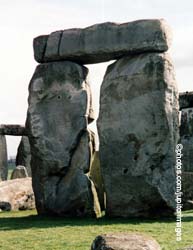Mysteries revealed — Stonehenge
Add to My Folder
Original article published 20 July 2009
Explore the heritage of one of the UK’s most enigmatic landmarks

Taking inspiration from the Latin word for ‘a reminder’ (monumentum), our ‘Mysteries revealed’ history series focuses on some of the world’s greatest – and most mysterious – historical monuments. The monuments featured have linked activities designed to encourage children to reveal the mystery (or not!) behind these enigmatic landmarks. A snap shot of relevant background information (for teacher reference or to extract and share with your class) and a stunning A4 poster will be provided each month for the monument in focus.
Background
- The Neolithic monument, Stonehenge, is situated on Salisbury Plain in Wiltshire.
- Most experts now believe that Stonehenge was developed during several different phases over a long period of time.
- The first stage, built around 3000BC, consisted of raised banks and ditches known as a ‘henge’.
- The second stage, built around 2150BC, involved 82 large bluestones from south-west Wales being set in the centre of the ‘henge’ to form an incomplete double circle.
- Around 2000BC, the outer circle of huge sarsen standing stones were added from the Marlborough Downs. A horseshoe of five trilithons (pairs of uprights with a lintel across each one) were placed in a horseshoe shape inside.
- Soon after 1500BC, some of the bluestones were reorganised.
- Experts differ about what Stonehenge was actually used for – Sun worship, a healing sanctuary or as a sacred burial site.
Already a member? Sign in below.
Published 7 May 2021
Reviews
You need to be signed in to place a review.

